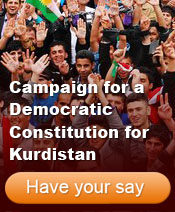
Ahmet Turk, Pervin Buldan, and Sirri Sureyya Onder attend a press conference in Istanbul, Turkey, Feb. 27, 2025 to read Abdullah Ocalan’s message
By Dr. Muhamad Sabir Kareem:
If we begin with the truth that one of the basic elements in defining the concept of peace includes the maintenance of justice and the reduction of violence, as well as identifying the factors behind war, violence, and organized oppression, then we can say that the peace process between the PKK and the Turkish state is far from being judged according to these elements of peace. Based on these principles, we must acknowledge that, while resisting military threats is necessary to maintain national security, on the opposing side, ending colonial oppression and supporting the liberation movement is essential to achieving real peace between both sides of the conflict.
In response to what we discussed in Part 1 regarding the shortcomings and inconsistencies related to the main subject of this essay, and in light of the truth mentioned above, we observe the following shortcomings in this peace attempt:
1. First of all, this attempt began with only one side: the Kurdish members of the DEM Party, followed by the imprisoned Kurdish leader Abdullah Öcalan. After several trips and communications between them and Öcalan in his place of imprisonment on Imrali Island, as well as their visits to the Kurdistan Region, they announced their declaration in a hotel in Istanbul on February 27, 2025. No members of the Turkish government nor any representatives from the Bahçeli party were present at the announcement.
2. In any peace process between two or more sides, there should be numerous direct or indirect meetings to discuss the main points and conditions of the conflict. It is important to involve a third party, preferably a representative of the UN or the EU, to ensure international oversight. This is especially important for the side that has faced a more tragic historical experience. Incidentally, it is worth mentioning that the history of the Kurds is filled with damage and failure in this regard. However, this peace attempt, to this point, has been marked by significant shortcomings.
3. Although the peace message was intended to be read by Öcalan (the imprisoned leader) at the Turkish Parliament, it was later supposed to be read at his place of imprisonment. However, none of this actually took place. Instead, the message was read by some members of the DEM Party at a hotel in Istanbul.
4. No government media, opposition channels, or press attended the announcement. Furthermore, the declaration was not broadcast by any official government media.
5. The message read at the conference was not the original copy. It appeared to be an altered version. This can be inferred from several pieces of evidence: first, when Ahmet Türk read the Kurdish version, there were problems with some unclear or mistranslated words. Second, at the beginning of the announcement, the person who started the conference claimed the message was about three and a half pages long, yet the version read was only about one and a half pages. Moreover, the content of the text seemed to have been prepared by Turkish intelligence officials.
Bio:
Dr. Muhamad Sabir Kareem is a lecturer at the University of Sulaymani in the College of Political Science. With a passion for academic research and political studies, he supervises MSc &PhD students’ research papers, guiding the next generation of scholars in the field. Dr. Kareem is the author of several influential works, including Contemporary Dictionary for Political Science (2024) and Pluralism and the effect of KRG’ Judicial system (2012).
.jpg)


